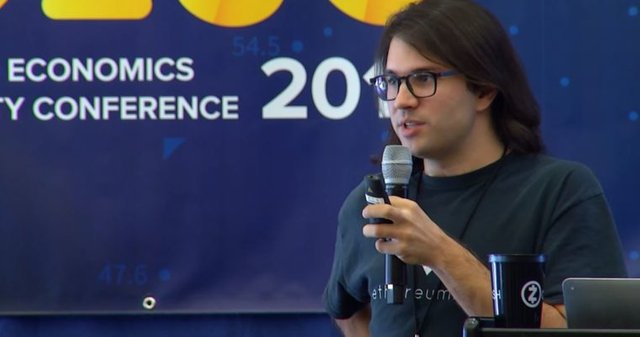Zamfir presented a proof-of-concept which highlights the future possibility of seamlessly moving ETH tokens and other messages across a shared blockchain.
Ethereum developers achieve yet another major milestone in the development of Ethereum’s scalability solution ‘Sharding.’ At the Ethereum hackathon EthBerlin last week, blockchain researcher Vlad Zamfir unveiled a proof-of-concept for Sharding along with developers Tim Beiko, Steve Marx, and others.
The new code for Proof-of-concept presented by Zamfir shows that how different Ethereum shards would communicate seamlessly on the blockchain. In his interview with CoinDesk, the code is in the preliminary stage of development and not production-ready. However, Zamfir added that it forms the foundation for future deployment on the Ethereum blockchain network.
In the technical terms, Zamfir explained:
“It’s really a proof-of-concept of the most core component in my sharding roadmap. It prevents the cross-shard atomicity failure, or more specifically, it prevents finalization of cross-shard atomicity failure, so it will never be that a ‘send’ is finalized and a ‘not received’ is finalized.”
Zamfir’s code highlights the future possibility of seamlessly moving ETH tokens and other messages across a shared blockchain. The proof-of-concept code is available on Github. Zamfir said:
“We’re still working on the integration but check back in a week and it should be something where we have instructions and you can follow the instructions and get it running on your computer.”
Understanding Sharding And Work Done So Far
Just like Bitcoin’s Lightning Network, Sharding is the second-layer scalability solution for the Ethereum network. The primary purpose of Sharding is to lessen the burden on Ethereum blockchain by breaking the network into smaller units, called shards. It helps to optimize the process of verifying information on the blockchain network.
Ethereum creator Vitalik Buterin along with his entire developers’ team is working on integrating Sharding to Ethereum blockchain. In addition to Sharding, Ethereum developers are also working on another scalability solution Plasma. According to the scheduled roadmap, it will take another two-to-five years to scale Ethereum to its full capacity.
Zamfir said that reason of unveiling this Proof-of-Concept (PoC) was to educate developers about Sharding, giving a further push to its development ahead. However, Zamfir noted that one of the critical challenges of the scalability solutions in solving the cross-shard message and cross-shard consistency problem. He said:
“I consider the core of sharding to be a cross-shard message or a cross-shard consistency problem. Vitalik thinks of it as sharding of availability, validity and execution of the state. I have a different perspective than Vitalik does of consensus protocols and therefore also sharding. I’m just focusing on what I think are the hardest problems first.”
Progress Made So Far In Sharding
Last month on August 1, Ethereum’s Status team announced the development of Nimbus sharding client. Status is a decentralized mobile application developed on the Ethereum network. The Nimbus sharding client-code is written using the Nim programming language to address scalability concerns of the Ethereum blockchain.
Nim deals after handling complex computations on less computational and powerful devices like smartphones. While commenting on the launch of Nimbus, the Sharding team said:
“A client designed to work well on mobile and embedded systems, that is modular enough to allow for rapid iteration and implementation of the research being done in terms of scaling will, we feel, advance greatly the goals of Ethereum as a decentralized ecosystem.”
Zilliqa is another Sharding-based project that presents an alternative approach to the scalability solutions. Several analysts have backed Zilliqa saying that it can be adopted by a wide range of decentralized applications (DApps).
Ethereum has been going through a rough phase recently as the price of ETH tokens dropped to a new 2018-low last week. The news of further development will certainly provide a ray of hope to ETH enthusiasts.